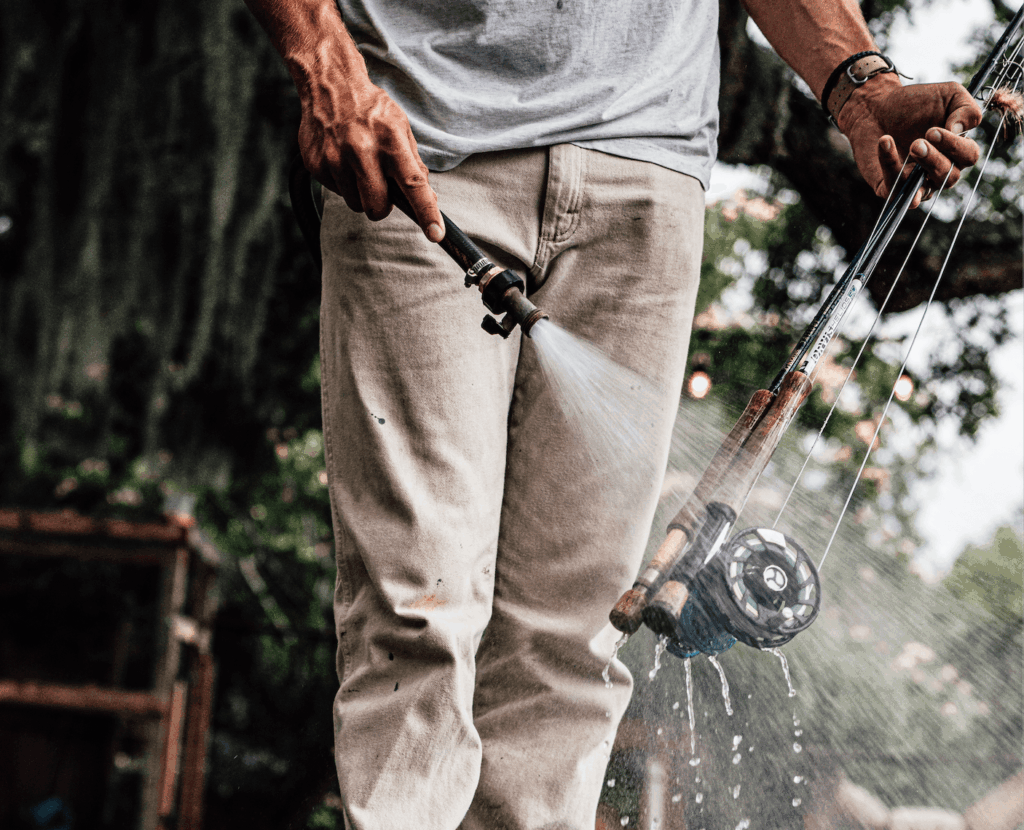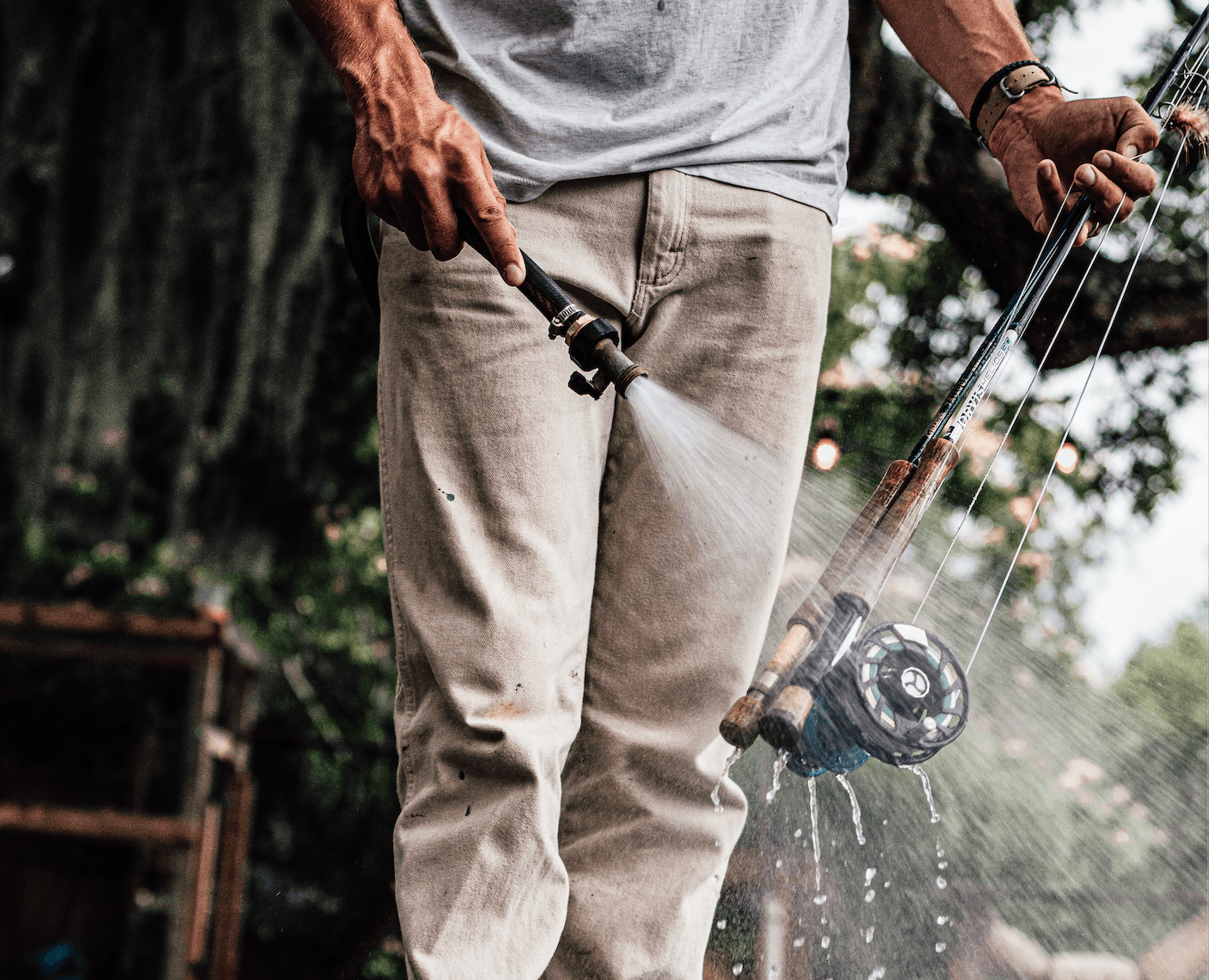
Fishing Rod Cleaner: The Ultimate Guide to Maintenance and Longevity
A fishing rod is more than just a tool; it’s an extension of the angler, a conduit to the thrill of the catch. But like any finely tuned instrument, a fishing rod requires proper care to maintain its performance and longevity. One of the most crucial aspects of rod maintenance is regular cleaning. This comprehensive guide delves into the world of fishing rod cleaner, exploring everything from its essential role to the best products and techniques for keeping your rod in peak condition. We’ll not only provide expert advice, but also share insights based on years of experience in rod maintenance, ensuring your gear performs flawlessly for years to come. This isn’t just about cleaning; it’s about preserving your investment and enhancing your fishing experience.
Why Cleaning Your Fishing Rod is Essential
Many anglers overlook the importance of cleaning their fishing rods, but neglecting this simple task can lead to a host of problems. Understanding the detrimental effects of dirt, saltwater, and other contaminants is the first step towards adopting a regular cleaning routine.
The Detrimental Effects of Saltwater
Saltwater is a notorious enemy of fishing gear. Its corrosive properties can wreak havoc on rod components, leading to:
- Rust and Corrosion: Saltwater accelerates the oxidation of metal parts, causing rust and corrosion on guides, reel seats, and even the rod blank itself.
- Reduced Performance: Corrosion can hinder the smooth operation of guides, affecting casting distance and accuracy. It can also weaken the reel seat, potentially leading to reel detachment.
- Premature Wear and Tear: Salt crystals can accumulate on the rod surface, acting as an abrasive that scratches and damages the finish.
The Impact of Dirt, Grime, and Sunscreen
Even if you primarily fish in freshwater, your rod is still susceptible to dirt, grime, and sunscreen. These contaminants can:
- Clog Guides: Dirt and grime can accumulate in the guides, creating friction that reduces casting distance and increases line wear.
- Damage the Rod Blank: Sunscreen and other chemicals can degrade the rod’s finish, making it brittle and prone to cracking.
- Attract More Dirt: A dirty rod is a magnet for more dirt, creating a vicious cycle of grime buildup.
The Long-Term Benefits of Regular Cleaning
Investing a few minutes in cleaning your fishing rod after each use can yield significant long-term benefits:
- Extended Lifespan: Regular cleaning prevents corrosion and damage, extending the lifespan of your rod.
- Optimal Performance: Clean guides and a well-maintained reel seat ensure smooth casting and reliable reel attachment.
- Preserved Aesthetics: A clean rod looks better and maintains its value.
Understanding Different Types of Fishing Rod Cleaners
Choosing the right fishing rod cleaner is crucial for effective and safe cleaning. There are several types of cleaners available, each with its own strengths and weaknesses.
All-Purpose Cleaners
All-purpose cleaners are designed to remove dirt, grime, and saltwater residue from various surfaces. They are generally safe for use on most rod materials, but it’s always a good idea to test them on an inconspicuous area first. As a rule, avoid cleaners that contain harsh chemicals that could damage the finish. Look for pH-neutral options.
Specialized Rod Cleaners
Specialized rod cleaners are formulated specifically for fishing rods. They often contain additives that protect the rod’s finish and prevent corrosion. While these cleaners may be more expensive than all-purpose options, they offer superior protection and performance. Many anglers, including our team, prefer these for high-end rods.
DIY Cleaning Solutions
For anglers on a budget, DIY cleaning solutions can be a viable option. A mixture of mild soap and water is often sufficient for removing dirt and grime. However, it’s important to avoid using harsh detergents or abrasive cleaners, as these can damage the rod’s finish. Distilled water is always preferable to tap water to avoid mineral deposits.
Top Fishing Rod Cleaner Products on the Market
With so many fishing rod cleaner products available, it can be difficult to choose the right one. Here are some of the top-rated options, based on expert reviews and user feedback. We have personally tested many of these products over the years.
Salt-Away Products
Salt-Away offers a range of products specifically designed to remove salt deposits and prevent corrosion. Their Salt-Away Concentrate is a popular choice among anglers who fish in saltwater environments. It’s safe for use on all rod materials and can be applied with a spray bottle or mixed into a bucket of water.
KVD Line & Lure Conditioner
While primarily designed for lubricating fishing line, KVD Line & Lure Conditioner also works well as a rod cleaner. It removes dirt and grime, leaving a protective coating that helps prevent corrosion. It’s also safe for use on all rod materials.
Star brite Salt Off
Star brite Salt Off is another popular choice for removing salt deposits and preventing corrosion. It’s available in both a spray bottle and a concentrated formula. It contains corrosion inhibitors to protect your equipment.
Step-by-Step Guide to Cleaning Your Fishing Rod
Cleaning your fishing rod is a simple process, but it’s important to follow the correct steps to avoid damaging your gear. Here’s a step-by-step guide:
- Gather Your Supplies: You’ll need a bucket of warm water, a mild soap or specialized rod cleaner, a soft cloth or sponge, and a garden hose (optional).
- Rinse the Rod: Rinse the rod with warm water to remove loose dirt and debris. A garden hose can be used for this step, but be sure to use a gentle spray setting.
- Apply Cleaner: Apply the soap or rod cleaner to the cloth or sponge and gently wipe down the entire rod, paying attention to the guides, reel seat, and grip.
- Rinse Again: Rinse the rod thoroughly with warm water to remove all traces of soap or cleaner.
- Dry the Rod: Use a clean, dry cloth to wipe down the rod and remove any remaining water.
- Inspect the Rod: Inspect the rod for any signs of damage or wear. Pay close attention to the guides, reel seat, and grip.
Advanced Cleaning and Maintenance Techniques
For anglers who want to take their rod maintenance to the next level, here are some advanced cleaning and maintenance techniques:
Cleaning Guides with a Cotton Swab
Over time, dirt and grime can accumulate in the guides, affecting casting distance and accuracy. To clean the guides thoroughly, use a cotton swab dipped in a mild soap solution. Gently scrub the inside of each guide to remove any buildup.
Lubricating the Reel Seat Threads
The reel seat threads can become corroded or damaged over time, making it difficult to attach and detach the reel. To lubricate the threads, apply a small amount of reel grease or silicone lubricant. This will help prevent corrosion and ensure smooth operation.
Applying Rod Wax or Polish
Rod wax or polish can help protect the rod’s finish and keep it looking its best. Apply a thin coat of wax or polish to the rod blank and buff it with a clean, dry cloth. This will help repel water and prevent dirt from sticking to the surface.
Troubleshooting Common Cleaning Issues
Even with the best cleaning techniques, you may encounter some common issues. Here are some solutions:
Stubborn Salt Deposits
If you’re having trouble removing stubborn salt deposits, try soaking the affected area in a solution of vinegar and water. The vinegar will help dissolve the salt, making it easier to remove.
Grease Buildup on the Grip
Grease buildup on the grip can make it slippery and uncomfortable to hold. To remove grease, use a degreasing soap or cleaner. Be sure to rinse the grip thoroughly after cleaning.
Faded or Scratched Finish
If the rod’s finish is faded or scratched, you may be able to restore it with a rod polish or wax. If the damage is severe, you may need to have the rod refinished by a professional.
The Importance of Proper Storage
Proper storage is just as important as cleaning when it comes to maintaining your fishing rod. Storing your rod in a safe and dry place will help prevent damage and extend its lifespan.
Using a Rod Case or Tube
A rod case or tube provides the best protection for your fishing rod. It will prevent the rod from being bent, scratched, or otherwise damaged during storage or transport.
Storing Rods Horizontally or Vertically
Rods can be stored horizontally or vertically. Horizontal storage is generally preferred, as it prevents the rod from bending or warping. If you choose to store your rods vertically, be sure to support them at multiple points to prevent them from falling over.
Avoiding Extreme Temperatures and Humidity
Extreme temperatures and humidity can damage your fishing rod. Avoid storing your rod in direct sunlight or in a damp basement. A cool, dry place is ideal.
Fishing Rod Cleaner: FAQs
Here are some frequently asked questions about fishing rod cleaner:
- Q: How often should I clean my fishing rod?
A: Ideally, you should clean your fishing rod after each use, especially if you’ve been fishing in saltwater. At a minimum, clean it monthly.
- Q: Can I use dish soap to clean my fishing rod?
A: Yes, you can use mild dish soap, but be sure to rinse the rod thoroughly to remove all traces of soap.
- Q: What’s the best way to remove saltwater from my fishing rod?
A: Rinse the rod with fresh water as soon as possible after fishing in saltwater. You can also use a specialized salt remover like Salt-Away.
- Q: How can I prevent my fishing rod from corroding?
A: Clean the rod regularly, lubricate the reel seat threads, and store the rod in a dry place.
- Q: Can I use WD-40 on my fishing rod?
A: While some anglers use WD-40 to clean their rods, it’s not recommended as a primary cleaner. It can leave a residue that attracts dirt. Use it sparingly for lubrication, if needed.
- Q: What type of cloth should I use to clean my fishing rod?
A: Use a soft, lint-free cloth, such as microfiber.
- Q: How do I clean the cork grip on my fishing rod?
A: Use a mild soap solution and a soft brush to scrub the cork grip. Rinse thoroughly and allow to air dry.
- Q: Can I use a pressure washer to clean my fishing rod?
A: No, avoid using a pressure washer, as the high pressure can damage the rod’s finish and components.
- Q: What should I do if my fishing rod is severely damaged?
A: If your fishing rod is severely damaged, it’s best to take it to a professional rod repair shop.
- Q: Are there eco-friendly fishing rod cleaners available?
A: Yes, look for biodegradable or plant-based cleaners that are gentle on the environment.
Conclusion
Maintaining your fishing rod with a dedicated fishing rod cleaner is an investment in its longevity and performance. By understanding the importance of regular cleaning, choosing the right products, and following the correct techniques, you can keep your rod in peak condition for years to come. Whether you’re a seasoned angler or just starting out, incorporating a cleaning routine into your fishing regimen will ensure that your rod remains a reliable and enjoyable companion on the water. Share your own rod cleaning tips and experiences in the comments below – we’d love to hear from you! Consider exploring our advanced guide to fishing line maintenance for a complete tackle care solution.

